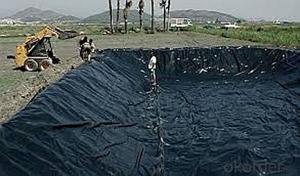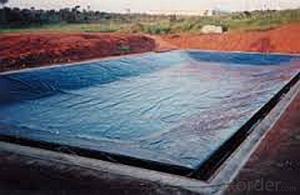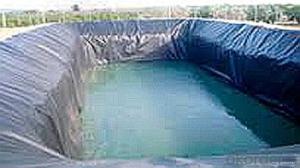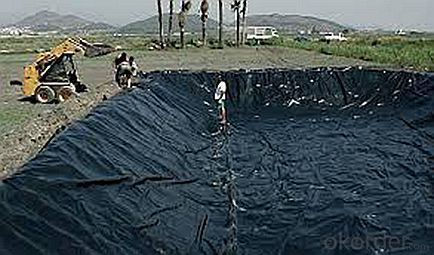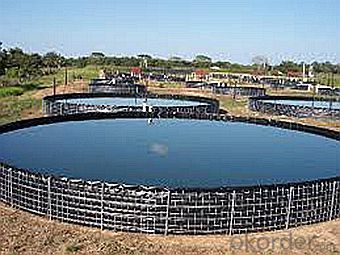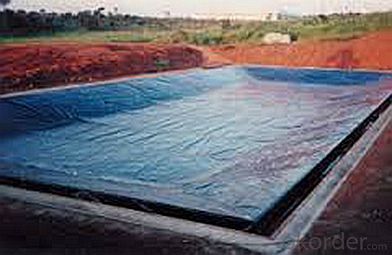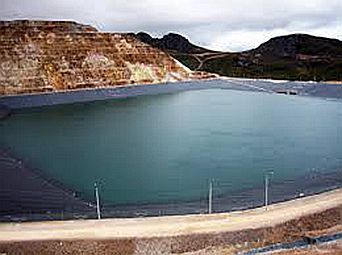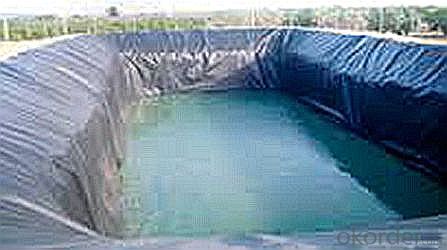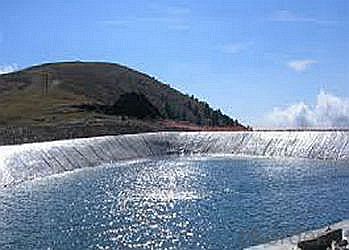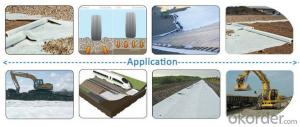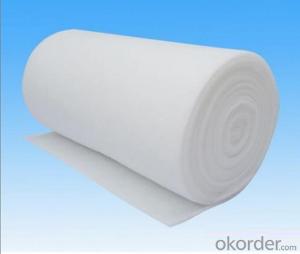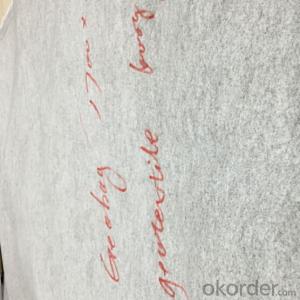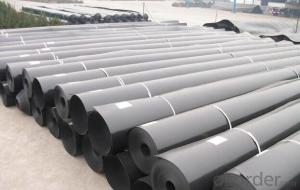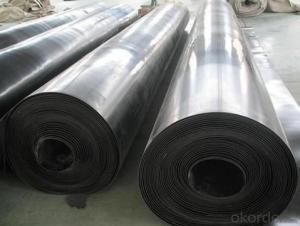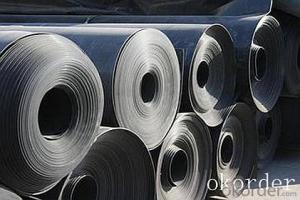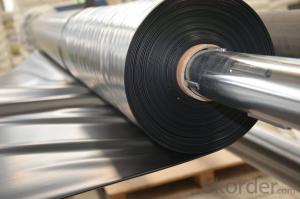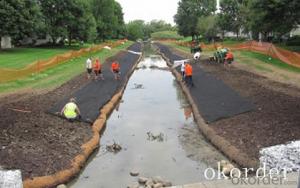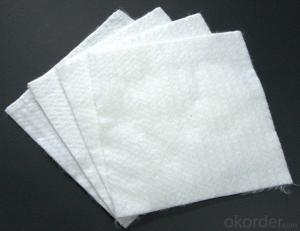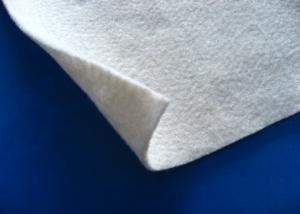Sf-40 Geotextile Reinforced High-Density Polyethylene (HDPE) Geomembrane for Masonry and Concrete Dams
- Loading Port:
- China main port
- Payment Terms:
- TT OR LC
- Min Order Qty:
- 1000 m²
- Supply Capability:
- 1000000 m²/month
OKorder Service Pledge
OKorder Financial Service
You Might Also Like
Specification

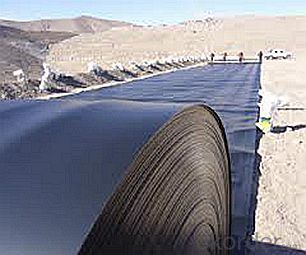
Feature:
1. Corrosion resistance, aging resistance, puncture resistance
2. Repairable and recyclable
3. Very low permeability and good flexibility
4. Smooth, UV resistance and no toxic
5. Excellent environmental stress cracking resistance property
6. High tensile strength and elongation
Properties :
It is of excellent physical and hydraulic properties, and especially its advantanges in the tensile strength,longitudinal and lateral strength ratio,uniformity and so on.
Supply a wide range of color,such as white,green and grey.Independent developed soft green fiber can protect installer's eyes at the onsite during work under the strong light,and it is eco-friendly productions.
Our Service
Quality assurance
1.On a regular basis or as per your request,we entrust national testing agencies to conduct quality inspections
2. Strictly in accordance with the ISO9001-2008 international quality system standard,we monitor and manage the whole process throughout production,quality testing,and measurement to ensure product quality
3. For quality-related construction delay or substandard construction(except for damage or losses due to customer’s responsibility or irresistible natural disasters),we have refunding,replacement,and repair services.We will respond to customers’ feedbacks on quality issues within 24 hours.
After-sales service
1.In order to provide customers with comprehensive technical support,we will provide technical and other related information upon request in a timely manner.
2.In required,we will appoint specialized technicians to the construction site to give technical trainings to construction people,and offer technical guidance throughout the whole construction process.
3.For damage due to shipment and delivery,after we receive the complaint,we will check the issure through provided pictures and videos.If our responsibility is confirmed,we wil offer free replacement.
4.When the construction is completed,as your request,our technical staff may participate in the final acceptance.
FAQ:
Q: What kind of payments does jenor support?
A: T/T, L/C, Cash are accepted.
Q: Do you charge for the samples?
A: Accordeing to our company policy, the samples are free, we only charge the freight fee. And we will return the freight fee during the next order.
Q: Can you produce according to customers' design?
A: Sure, we are professional manufacturer, OEM and ODM are both welcome.
Q: Do you have other products?
A: Yes, please check the pictures:
- Q: Geotextile water filter?
- Geotextile is used to filter the water, mainly to see where to use, and then consider the thickness of the cloth.
- Q: What are the different installation guidelines for geotextiles in reinforcement projects?
- The installation guidelines for geotextiles in reinforcement projects typically involve the following steps: 1. Site Preparation: Clear the construction area of any vegetation, debris, or loose soil. Level the ground and remove any protrusions or sharp objects that could damage the geotextile. 2. Geotextile Placement: Unroll the geotextile over the prepared area, ensuring it covers the entire project site. Overlaps between adjacent rolls should be at least 1 to 2 feet to provide proper continuity. 3. Anchoring: Secure the geotextile at the edges using anchor trenches, stakes, or other appropriate methods to prevent movement during installation or in the long term. 4. Jointing: Overlap adjacent geotextile panels by a minimum of 1 to 2 feet, depending on the project requirements. Secure the overlap with appropriate fasteners or adhesives to ensure proper functioning. 5. Protection: If necessary, cover the geotextile with a protective layer, such as a layer of soil or aggregate, to shield it from potential damage during construction activities or exposure to UV radiation. 6. Compaction: If the project involves soil stabilization or reinforcement, follow the recommended compaction procedures to ensure proper integration of the geotextile with the surrounding soil or aggregate. 7. Quality Control: Regularly inspect the geotextile installation to ensure that it is properly placed, free of damage, and functioning as intended. Any identified issues should be addressed promptly. It is important to note that specific installation guidelines may vary depending on the project type, site conditions, and the type of geotextile being used. It is recommended to consult the manufacturer's recommendations and seek professional guidance to ensure proper installation.
- Q: Who knows geotextile, how to sew, the best video
- Sewing machine can be sewn, you can also use hot air gun hot melt, I am specializing in the production of geotechnical materials
- Q: How do geotextiles help in preventing weed growth?
- Geotextiles act as a physical barrier that prevents weed seeds from accessing sunlight and nutrients, inhibiting their growth and establishment. They also help in reducing soil erosion and maintaining the integrity of landscaping projects.
- Q: What are the key factors affecting the puncture resistance of geotextiles?
- The key factors affecting the puncture resistance of geotextiles include the thickness and density of the fabric, the type and strength of the fibers used, the presence of any surface coating or treatment, and the overall construction and quality of the geotextile. Additionally, the puncture resistance can also be influenced by environmental factors such as temperature, moisture, and exposure to chemicals or UV radiation.
- Q: what do you mean nonwoven geotextiles ???
- please refer the folowing url to know all the details about non woven geo textiles
- Q: Geotextile fng-pet-250-400
- Fng-filament is a polyester filament spunbonded acupuncture non-woven geotextile Cloth 250g / ㎡-400g / ㎡.
- Q: Can geotextiles be used in dam construction?
- Yes, geotextiles can be used in dam construction. Geotextiles are commonly used in dam construction as they provide various benefits such as erosion control, filtration, and reinforcement. They help in stabilizing the soil, preventing soil erosion, and providing drainage, ultimately enhancing the overall performance and longevity of the dam structure.
- Q: Are geotextiles suitable for use in high-traffic areas?
- Yes, geotextiles are suitable for use in high-traffic areas. Geotextiles are durable and provide reinforcement and stabilization to the soil, making them ideal for use in areas with heavy foot or vehicle traffic. They prevent soil erosion, distribute loads, and increase the longevity of the pavement or surface, making them a reliable choice for high-traffic areas.
- Q: Are geotextiles suitable for use in coastal erosion control?
- Yes, geotextiles are suitable for use in coastal erosion control. Geotextiles are commonly used in coastal areas to stabilize the soil, prevent erosion, and protect the coastline from wave action. They are effective in reducing soil erosion by filtering sediment and allowing water to permeate through while preventing the loss of soil particles. Geotextiles also provide protection against storm surge and tidal forces, making them a valuable tool in coastal erosion control efforts.
Send your message to us
Sf-40 Geotextile Reinforced High-Density Polyethylene (HDPE) Geomembrane for Masonry and Concrete Dams
- Loading Port:
- China main port
- Payment Terms:
- TT OR LC
- Min Order Qty:
- 1000 m²
- Supply Capability:
- 1000000 m²/month
OKorder Service Pledge
OKorder Financial Service
Similar products
Hot products
Hot Searches
Related keywords
